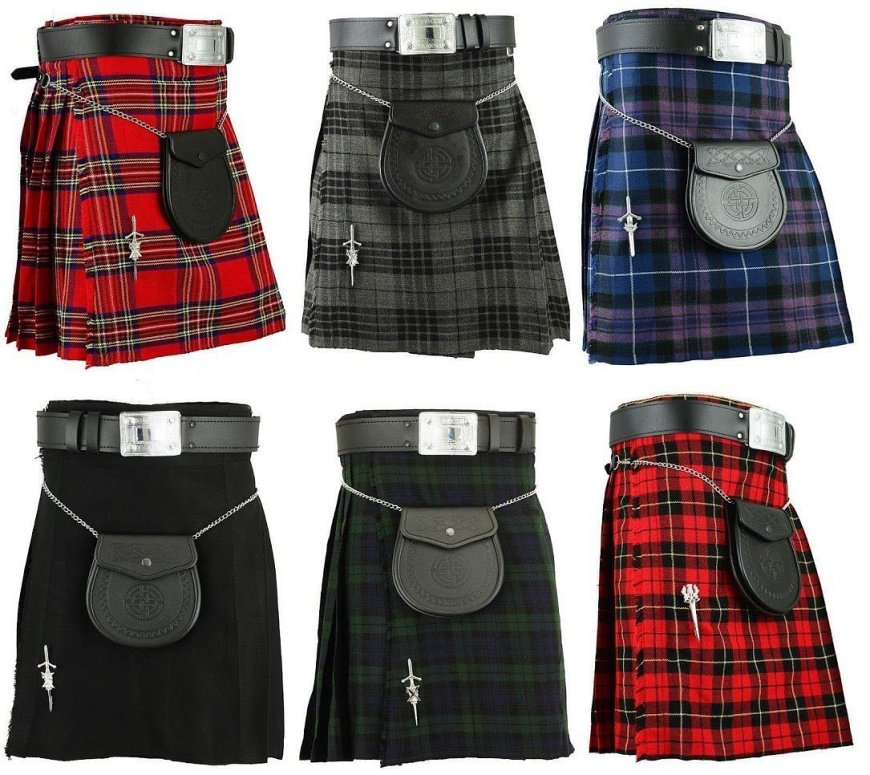Dashing Kilts: Where Bold Meets Tradition
Dashing Kilts: Where Bold Meets Tradition” is not mere marketing—it sums up a cultural phenomenon: a garment that bridges centuries and continents.

Introduction {#introduction}
In a world full of fashion trends that come and go, Dashing Kilts stand firmly rooted in centuries of heritage while making bold statements in modern style. “Dashing Kilts: Where Bold Meets Tradition” celebrates this juxtaposition—merging rugged Highland legacy with contemporary flair. Whether draped in tartan for a wedding, strutting down city streets, or featured on a couture runway—the Dashing Kilt is more than a garment; it’s an icon of confidence, identity, and timeless elegance.
This comprehensive article explores every angle—from the storied past to both formal and casual styling, from craftsmanship to current-day brands—ensuring you grasp the cultural weight and modern relevance of wearing a Dashing Kilt.
2. The Tale of the Kilt: History & Tradition {#history}
2.1 The Great Kilt and Highland Origins {#great-kilt}
Kilts originated in the Scottish Highlands during the 16th century as the "great kilt" or féileadh mòr—a versatile, full-body garment with an upper section that doubled as a cloak or hood. Woven from heavy wool, it offered warmth, mobility across rugged terrain, and waterproofing—simpler than carrying blankets or coats
2.2 The Modern Kilt Emerges {#modern-kilt}
By the late 17th or early 18th century, wearers had separated the great kilt's bottom portion, creating the small kilt or "walking kilt." A tailored version appeared in the late 1700s; notably, the Gordon Highlanders boasted one as early as 1796 .
2.3 Military Adoption & Romantic Revival {#military-romantic}
Following the 1746 Dress Act ban—intended to suppress Highland culture—the kilt lived on through military exemption. Highland regiments adopted it as formal attire, elevating its symbolic prestige .
The Romantic era, championed by Sir Walter Scott and later popularised by Queen Victoria, made tartan and kilts emblematic of Scottish identity; Scottish culture was romanticised and exported widely .
3. Why Dashing Kilts Represent Boldness {#boldness}
3.1 Cultural Symbolism {#symbolism}
Each kilt’s tartan pattern signals clan identity. For wearers, sporting a kilt means proudly showcasing heritage—be it Scottish, Celtic, or otherwise. Today, the kilt also signifies confidence, defiance, and self-expression .
3.2 Craftsmanship & Materials {#craftsmanship}
Authentic Dashing Kilts are made from top-quality wool, intricately pleated by artisans per traditions. Meticulous attention—such as precisely aligned pleats and durable stitching—underscores their bold elegance .
While rooted in tradition, kilts have taken on modern forms: casual cotton or polyester models, utility kilts with pockets, leather, denim, and even camouflage versions—bridging heritage with function .
4. Types of Dashing Kilts {#types}
4.1 Traditional Tartan Kilts {#traditional}
-
Clan tartans: Registered to specific Scottish families—e.g., MacGregor, Campbell, Stewart.
-
Regimental tartans: Originating with military units like the Black Watch .
-
Ideal for formal events like weddings, funerals, and Highland games.
4.2 Casual & Utility Kilts {#casual}
-
Materials like cotton, denim, polyester blends.
-
Features include cargo-style pockets, adjustable fastenings, and urban styling.
-
Examples: American “utility kilts” priced from ~$60–$100 .
4.3 High‑Fashion Collaboration {#high-fashion}
-
Collaborations, such as Christian Dior x Samantha McCoach, elevated kilts into luxury fashion
-
Designers like Vivienne Westwood and Alexander McQueen have reinvented tartan and kilts on the runway
5. How to Wear Your Dashing Kilt {#how-to-wear}
5.1 Formal Highland Ensemble {#formal-ensemble}
-
Kilt – Highland dress tartan.
-
Prince Charlie or Argyll jacket – formal upper wear.
-
Sporran – leather pouch worn at the waist.
-
Kilt hose and flashes – wool socks with ribbons.
-
Ghillie brogues – lace-up dress shoes.
-
Sgian-dubh and kilt pin – traditional accessories .
5.2 Everyday Street Style {#street-style}
-
Pair your kilt with a fitted T-shirt, leather jacket, and boots.
-
Utility kilts feature pockets for phones, keys, wallets—no sporran needed
-
Denim kilts + high-top sneakers = contemporary fusion.
5.3 Accessorizing the Look {#accessories}
-
Belt & buckles: worn on casual kilts, resembling jeans belts.
-
Jewelry: cufflinks, tie-pins, and brooches offering personal expression.
-
Outerwear: for colder weather, overcoats or capes in complementary tartans and textures.
6. Caring for Your Dashing Kilt {#care}
-
Spot-clean minor spills ASAP.
-
Dry-clean only for wool kilts: once a season or post-heavy wear.
-
Gentle wash cotton or denim kilts: cool water, mild detergent, line drying.
-
Weight storage: hang on a broad hanger to preserve pleats.
-
Moth prevention: cedar sachets or lavender in closet.
7. Frequently Asked Questions (FAQ) {#faqs}
1. What makes a kilt “dashing”?
A Dashing Kilt blends bold patterns, premium materials, precise craftsmanship, and confident wearability—solely the modern incarnation of tradition.
2. Are Dashing Kilts only for Scots?
Not at all. While rooted in Scottish heritage, kilts are now worn globally—as symbols of personal identity, pride, fashion, or cultural appreciation.
3. What’s the difference between tartan and sett?
Tartan is the fabric pattern; a sett is the repeating color-block design—unique to each clan, designer, or brand.
4. What do you wear under a kilt?
Traditionally nothing—“true Scotsman” style Nowadays, most men wear underwear for comfort and hygiene.
5. Can women wear Dashing Kilts?
Yes! Many designs are unisex. Women’s kilts or tartan skirts styled similarly are widely available.
6. How do I choose the right tartan?
-
Clan tartan if you have ancestral ties.
-
Modern fashion tartan if you're aesthetic-focused.
-
Regimental or designer tartan if you prefer formal or trend-driven styles.
7. Where can I buy authentic Dashing Kilts?
-
Kinloch Anderson in Edinburgh: premium bespoke service—and the “Tartan Butler” experience .
-
Sport Kilt (USA): casual, functional kilts from about $60 .
-
High‑fashion outlets carry couture kilts by designers like Dior and Westwood.
8. Conclusion {#conclusion}
“Dashing Kilts: Where Bold Meets Tradition” is not mere marketing—it sums up a cultural phenomenon: a garment that bridges centuries and continents. From Highland origins to military adoption, Romantic revival, everyday wear, and couture runways—kilts have proven their versatility and staying power.
By choosing a Dashing Kilt, you honor craftsmanship, historical meaning, clan symbolism, personal identity, and fashion-forward attitude. Whether you wear it under open skies at Highland Games, in formal ceremonies, or on urban sidewalks, you’re draping yourself in pride, resilience, and distinction.
Step into your Dashing Kilt—and make each stride a statement.











































